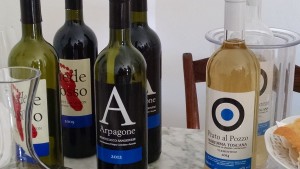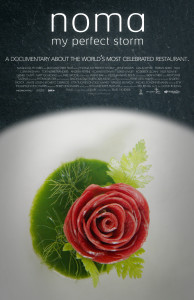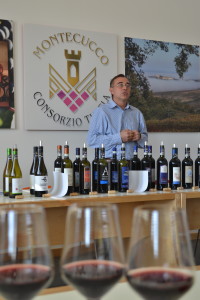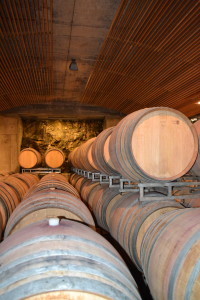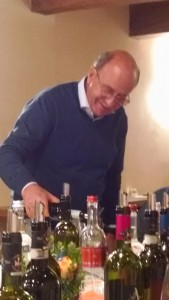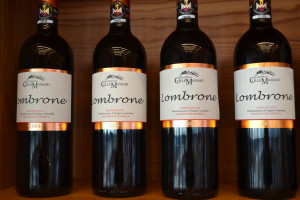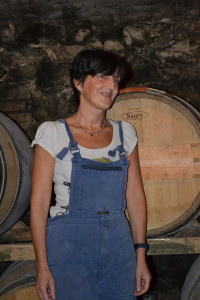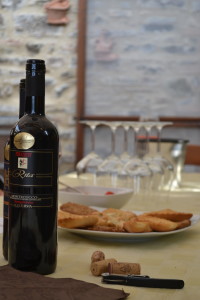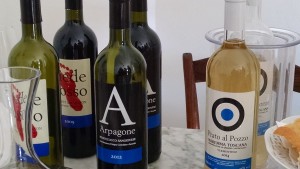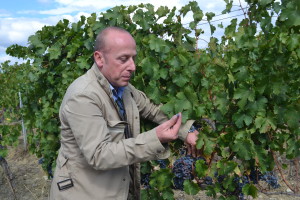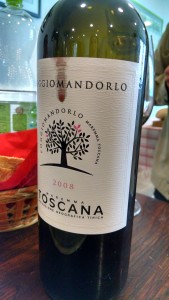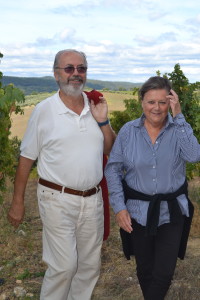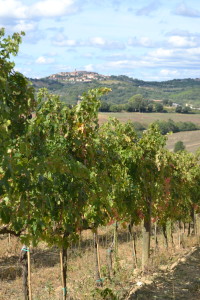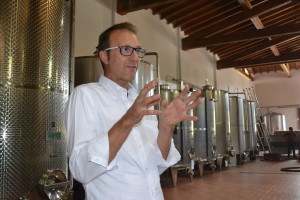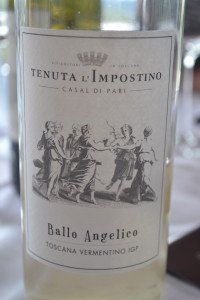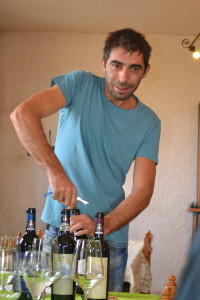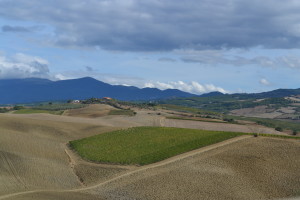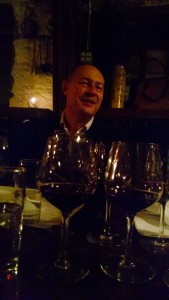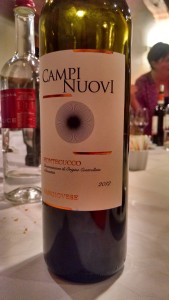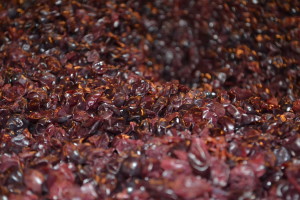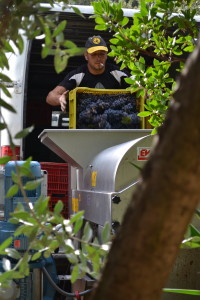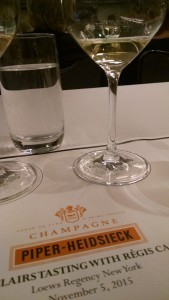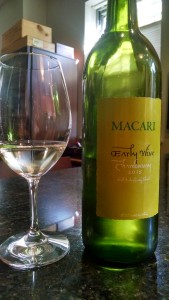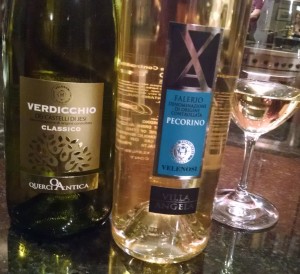 When I was first invited to meet with Angela Velenosi, owner of Velenosi Winery in Le Marche, I was intrigued by her name. Having studied Italian, the word velenosi struck an immediate cord; we had read stories in class about a character named Valentino Valentini who had first gone on a walk through the forest collecting mushrooms and making a tasty risotto with them. Unfortunately, as the tale went, “Ma…spesso i funghi sono velenosi” – but…often mushrooms are poisonous – so Valentino was brought to the Emergency Room. After leaving the hospital a few days later, our dear friend Valentino was treated to a dinner of oysters, but, as was pointed out: “Ma…spesso le ostriche sono velenose” (but…often oysters are poisonous), so Valentino was again rushed off for emergency care.
When I was first invited to meet with Angela Velenosi, owner of Velenosi Winery in Le Marche, I was intrigued by her name. Having studied Italian, the word velenosi struck an immediate cord; we had read stories in class about a character named Valentino Valentini who had first gone on a walk through the forest collecting mushrooms and making a tasty risotto with them. Unfortunately, as the tale went, “Ma…spesso i funghi sono velenosi” – but…often mushrooms are poisonous – so Valentino was brought to the Emergency Room. After leaving the hospital a few days later, our dear friend Valentino was treated to a dinner of oysters, but, as was pointed out: “Ma…spesso le ostriche sono velenose” (but…often oysters are poisonous), so Valentino was again rushed off for emergency care.
After meeting Angela Velenosi in person, I am pleased to note that, while Valentino Valentini was quite unlucky, Angela has had a much better track record with her life. This poised and passionate Italian woman has been the driving force behind her family’s wine label, which she founded in 1984 with then husband, Ercole, when she was only 20 years old. The two saw the opportunity, had a good relationship with the local wine community and, perhaps most importantly, a passion for wine. Angela admits that she had very limited knowledge and experience, but clearly had an abundance of conviction, confidence and courage.
Thirty-plus years later, it is evident that her gamble and dedication has paid off. An award winning winery (listed among Wine Spectator’s top 100 wineries in both 2012 and 2013), Velenosi is firmly established in the region today and is the second largest, family-owned estate, with 100 hectares planted in the south of the region and another 48 hectares located closer to the sea in the province of Ancona.
This same fearlessness seems to pervade everything she does. During dinner she revealed that she has run a total of 11 marathons – three of them in New York. Unfortunately, her knees have kept her from continuing this particular passion, but while, marathons are not a part of her life anymore she is still extremely active.
In addition to being a staunch supporter for her own brand, Angela is equally heartfelt about the region and currently serves as President of the Consorzio di Tutela Vini Piceni, a post she has held since 2014.
Admittedly, among Italian wines, at least in the U.S., Le Marche is much less well known, but this region, situated along Italy’s Eastern coast along the Adriatic Sea, has a lengthy history. The only plural among Italy’s 20 regions, Le Marche got its name in 1105 when three border regions were joined by the Roman Emperor Henry IV. (And, perhaps it’s a bit like New York City’s The Bronx in that it is the only region to possess an article.) Within Le Marche, the town of Ascoli dates back to 1000 BCE and was established by the Piceni tribe of warriors. It pre-dates the Romans’ rise to prominence and was known for its iron works and jewels.
Today, Le Marche is home to 5 DOCGs and 16 DOCs, featuring a diverse range of climates, depending upon topography and distance from the coast. The area features various hills and mountains; there are no flat lands to be found. The relatively small region is primarily known for its crisp, refreshing whites and its Montepulciano-based reds. Although Sangiovese features heavily in many of Le Marche’s wines, the Sangiovese in the Le Marche is a different clone than that found in Tuscany. Consequently, these wines share more similarity to those produced in Abruzzo than in Tuscany.
Velenosi produces 20 different wines, from a combination of indigenous varieties (such as Pecorino, Passerina, Verdicchio, Montepulciano, Sangiovese and Lacrima) and international grapes. In general, Angela likes wines that are both ready to drink, but also have good aging potential, a philosophy she applies to all of the wines she produces. With this mind, many of her wines are bottled in dark, heavy glass to keep the light out during the lengthy aging process. Additionally, Angela looks for clarity and purity in all of her wines. As a result, Angela’s wines are anything but poisonous. – they are elegant, well made expressions of the Le Marche terroir.
Eight of the Velenosi wines are exported to the U.S., covering a range of styles and providing an excellent introduction to the wines of Le Marche!
TASTING NOTES
Passerina Brut NV, Marche, Italy
A Charmat Method sparkling wine produced from 100% Passerina grapes, this slightly off-dry sparkler presents light aromas of peach and pear on the nose and palate. It has nice acidity, with a lovely mousse, finishing cleanly and pairing well with food.
Pecorino Villa Angela Falerio DOC Pecorino 2014, Marche, Italy
Named for the tradition of grazing sheep in the mountains, this variety stems from the Italian word pecora, which translates as sheep. The wine has notes of anise, citrus and apple on the nose. The light to medium-bodied palate offers up savory, herbal and vegetal flavors with high acidity and a slight, textural grip.
Verdicchio Querciantica Verdicchio dei Castelli di Jesi DOC Classico 2014, Marche, Italy
This wine has fresh fruit aromas of peach and almond and is more fruit-forward than the Pecorino, although it is still dry and balanced. There is bright acidity on the medium to full-bodied palate, with flavors of pear, peach and almond.
Lacrima Querciantica Lacrima di Morro d’Alba DOC 2014, Marche, Italy
An aromatic red variety, Lacrima has thins skins, resulting in a lighter-bodied red, with little to no tannins. The grape’s freshness is deliberately preserved through the use of stainless steel and no wood contact. This wine expresses its fresh raspberry, cherry and plum fruit so vibrantly with bright acidity and beautiful balance.
Brecciarolo Rosso Piceno DOC Superiore 2013, Marche, Italy
Falling within the Rosso Piceno DOC rules, the specific blend is up to the producer, with this wine being a blend of 70% Montepulciano/ 30% Sangiovese, aged in older oak for 10-12 months. The heavy reliance on Montepulciano produces a stronger, darker wine than other Rosso Piceno wines.
Ludi, Offida DOCG Rosso 2011, Marche, Italy
One of Angela’s top wines, Ludi was first produced in 1998, named for the Latin root for play – ludo – a reminder that wine is meant to be enjoyed. It is a blend of 50% Montepulciano, 30% Cabernet Sauvignon and 20% Merlot, which is aged in new French oak for 24 months. This wine offers up ripe, yet elegant, black fruit with cedar, vanilla and a hint of anise, with finely grained tannins and long length.
Roggio del Filare 2010, Rosso Piceno DOC Superiore, Marche, Italy
Velenosi’s flagship is the Roggio del Filare, literally “fire in the vineyard,” whose name stems from a poem by the Italian poet Carducci, recalling the way that the sun looks on the vines as it sets in the vineyards. This 70% Montepulciano – 30% Sangiovese blend is produced from 50+ year old vines with a long maceration on the skins and then aged in new French oak for 18 months. It is intense, powerful and structured, with beautiful, concentrated black fruit, wood and minerality on the full-bodied palate with very long length.
Visciole Selezione Cherry Wine NV, Marche, Italy
This fresh and delicate dessert wine is produced from a combination of fully-fermented Lacrima grapes to which a wild cherry syrup, known as visciole, is added, causing a second fermentation and ultimately resulting in a wine with remaining sweetness. Redolent of ripe cherries on the nose and palate, the wine is nicely balanced, with enough sugar to marry well with dessert without being cloying.


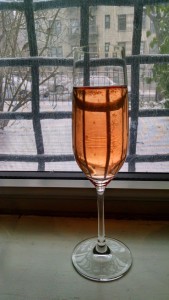
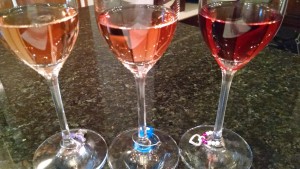
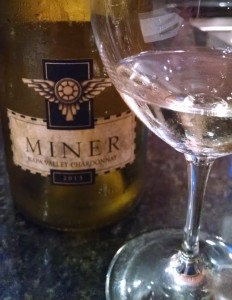
![IMG_20151207_133046568[2]](http://itsawinederfullife.com/wp-content/uploads/2015/12/IMG_20151207_1330465682-169x300.jpg)


